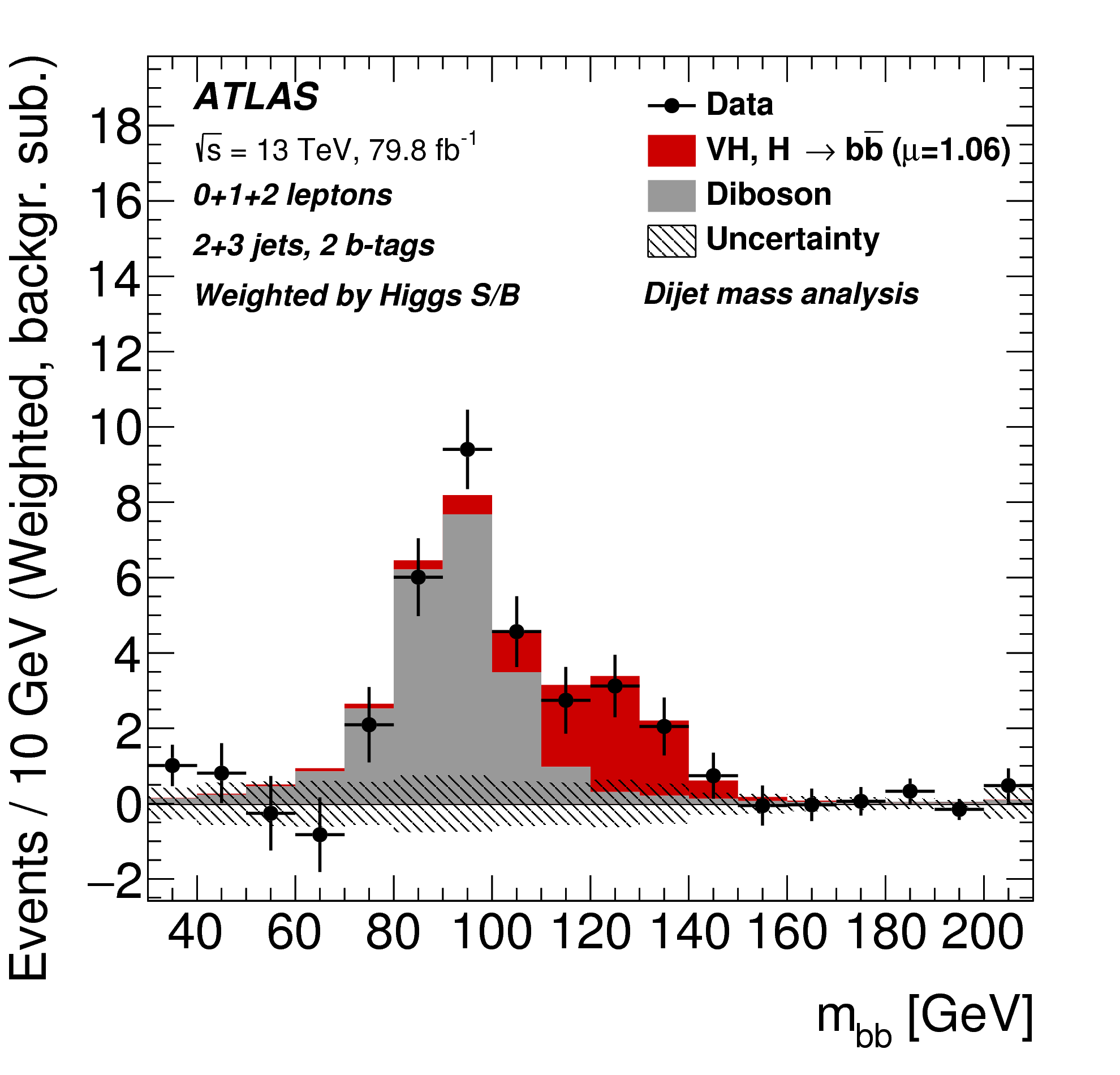Higgs and diHiggs @UCL
The Higgs boson was discovered via its decays to bosons by the ATLAS and CMS collaborations in 2012 and has since been observed in decays to tau leptons. Until 2019, it had however not directly been observed coupling to the quark sector, which includes its largest decay to a pair of b-quarks. To fully probe the new particle it is vital to directly observe its coupling to quarks and to precisely measure its decay to b-quarks. UCL pioneered this decay channel and has since played a leading role in observing the Higgs decaying to a pair of b-quarks. Despite the large branching ratio, this is a very challenging channel, which requires great understanding of the complex and large background processes. However, studying this channel is vital to fully understand the nature of the Higgs boson disocvered at the LHC and to unravel the mysteries surrounding the Higgs sector.
UCL also pioneered the search for resonant and non-resonant Higgs boson pair production in the HH->bbbb (4b) final state, recognizing and demonstrating early that this is the most powerful channel in the search for heavy reasonances decayng to a pair of Higgs bosons (X->HH), as well as one of the most sensitive channels in the search for non-resonant di-Higgs production and the study of the Higgs self-coupling, which will provide insights into the shape of the Higgs potential and the role of the Higgs field in cosmology and the early moments of the Universe.
Key Academics
Jon ButterworthGabriel Facini
Nikos Konstantinidis
Tim Scanlon
Leadership Positions
Tim Scanlon - ATLAS H->bb Subgroup Covener 2016-2017Tim Scanlon - ATLAS Editor for H->bb and VH Observation Paper
Gabriel Facini - ATLAS Editor for boosted fully-hadronic H->bb Paper
Nikos Konstantinidis - ATLAS Editor for full Run-2 non-resonant HH->4b Paper (2022)
Key H(bb) References
- J. Butterworth, A. Davidson, M. Rubin and G. Salam,
Jet substructure as a new Higgs search channel at the LHC
arXiv:0802.2470
Phys.Rev.Lett. 100 (2008) 242001
- ATLAS Collaboration,
Search for the bb decay of the Standard Model Higgs boson in associated (W/Z)H production with the ATLAS detector
arXiv:1409.6212
JHEP 1501 (2015) 069
- J. Butterworth, I. Ochoa and T. Scanlon,
Boosted Higgs→bb in vector-boson associated production at 14 TeV
arXiv:1506.04973
Eur.Phys.J. C75 (2015) no.8, 366
- ATLAS Collaboration,
Evidence for the H→bb decay with the ATLAS detector
arXiv:1708.03299
JHEP 12 (2017) 024
- ATLAS Collaboration,
Observation of H→bb decays and VH production with the ATLAS detector
arXiv:1808.08238
Phys. Lett. B 786 (2018) 59
Key HH(4b) References
Boosted hh->bbbb: a new topology in searches for TeV-scale resonances at the LHC
arXiv:1307.0407
Phys. Rev. D 88, 114005 (2013)
Non-resonant Higgs pair production in the bbbb final state at the LHC
arXiv:1410.2794
Eur.Phys.J. C75 (2015) 219
Search for resonant pair production of Higgs bosons in the bbbb final state using pp collisions at 13 TeV with the ATLAS detector
arXiv:2202.07288
Phys. Rev. D 105 (2022) 092002
Search for non-resonant pair production of Higgs bosons in the bbbb final state in pp collisions at 13 TeV with the ATLAS detector
ATLAS-CONF-2022-035

